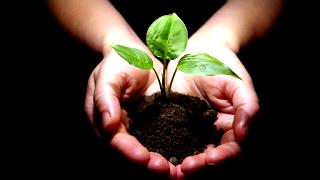Quick tips to get your plants to love the soil
What you do to the world now can benefit future gardeners. Dirt is easy to underestimate, but it is a very important part of our planet.
About 4.5 billion years ago, a group of dust from stars gathered together and formed a molten sphere: Earth. Since then, the planet's surface has cooled, shifted, peaked, and eroded. Life has been shaped and developed by countless generations living, dying, and returning to earth. This rich history created the dirt in your garden and the soil in your planters.
The past is the key to the future of your terra firm. Volcanic rocks such as perlite and pumice prevent the soil from coming together. The decaying remains of plants and animals add nutrients. Silica makes up the bulk of most soils in the form of sand and clay. And of course, humans have irreversibly changed the ground on which we stand, sometimes with disastrous effects.
The present is also important, but you probably won't be changing the geological course of the planet with your backyard. Even so, even small-time landlords still have a few ways to make sure they're not causing real damage.
Test your
soil Before you add store-bought fertilizer, aspirin, urine, or anything else to your soil, you must submit the soil for testing. The results will influence your nutrient compensation decisions. For example, animal manure can be slightly alkaline, so if you live in an area that already has alkaline soil and your plants don't prefer this pH, you can choose a different option.
In the USA, you can learn about your land from this country's best kept secret: extension services. Almost every land grant university has one. Extension offices are a group of specialists who specialize in applying science to practical situations - usually agriculture, but also more home-based activities such as soil testing. Check with your local extension service to see if they have a soil testing lab that can test for factors like pH, plant nutrients, salt levels, organic matter content, and even contamination.
Add fertilizer or not
Artificial fertilizers require intense energy to make and create nitrous oxide, a greenhouse gas that is 300 times more effective at retaining heat than carbon dioxide. When it rains, these nutrients can be washed from the soil into water bodies, where they form algal blooms, which are sometimes toxic. The flowers also absorb oxygen, causing dead zones where other marine organisms cannot live. Fertilizers have allowed modern agriculture to support billions more people than it could otherwise, but you probably don't need any of them for your garden to thrive, especially if you use natural fertilizers like horse manure.
Soil and environmental scientist Megan Balks, associate director of a New Zealand research company called Earthbrooke Views and an assistant senior research fellow at the University of Waikato, suggests finding pea straw, as legumes naturally capture and store nitrogen. If you decide you need chemicals, adjust the amount you add based on the results of your soil tests so you don't add too much. For example, if the soil is very acidic, you can add limestone to make it more alkaline. Native plants of your area are adapted to your area, so they are less likely to need fertilizer.
buy potting mix
While digging up some soil from your garden and throwing it in a pot may seem like the easiest and most eco-friendly option, it actually doesn't work that well in practice. The dirt in your garden will be heavy and can cause drainage problems as it settles firmly in the containers. The easiest solution is to purchase potting soil that will display the mineral makeup in detail in the bag. The contents are probably mostly organic matter - recently living organisms that are currently decaying. This works well for container gardening, says Stephanie Murphy, who directs the soil testing lab at the New Jersey Agricultural Experiment Station at Rutgers University. You will need to change the soil at least every few years, but most houseplant owners do this already.
If you want to avoid the carbon footprint of a truck transporting store-bought soil an undetermined distance, you can see if there is a compost program in your city. You can also make your own. When potting your plant, you can add a light volcanic rock like perlite or pumice for better drainage, especially for plants like succulents that prefer drier soils. But Murphy says your soil will become hydrophobic if you let it dry out completely. If water has accumulated at the base of your houseplants instead of getting wet to the roots, you've had dry soil.
While many of the components in potting soil have a negligible cost to the planet's ecosystems, peat is a problem. Peat is an accumulation of sphagnum moss and other organic matter that grows in wet areas. It is an excellent growing medium for many plants, as it retains moisture and oxygen without getting wet. But the environmental costs are serious enough that organizations like the Horticultural Society of London are now avoiding using it. Although peat bogs make up less than 4 percent of the soil surface, they store 42 percent of soil carbon, according to the International Union for Conservation of Nature. Peat harvesting removes the best carbon sink on the planet and this is not a sustainable way to care for your garden or houseplants.
In the short term, it will take more work to test your soil and put in the extra effort to research the nutrients you need. But I hope that taking good care of the parts of the earth in your care means a better future for your small part of the planet.
